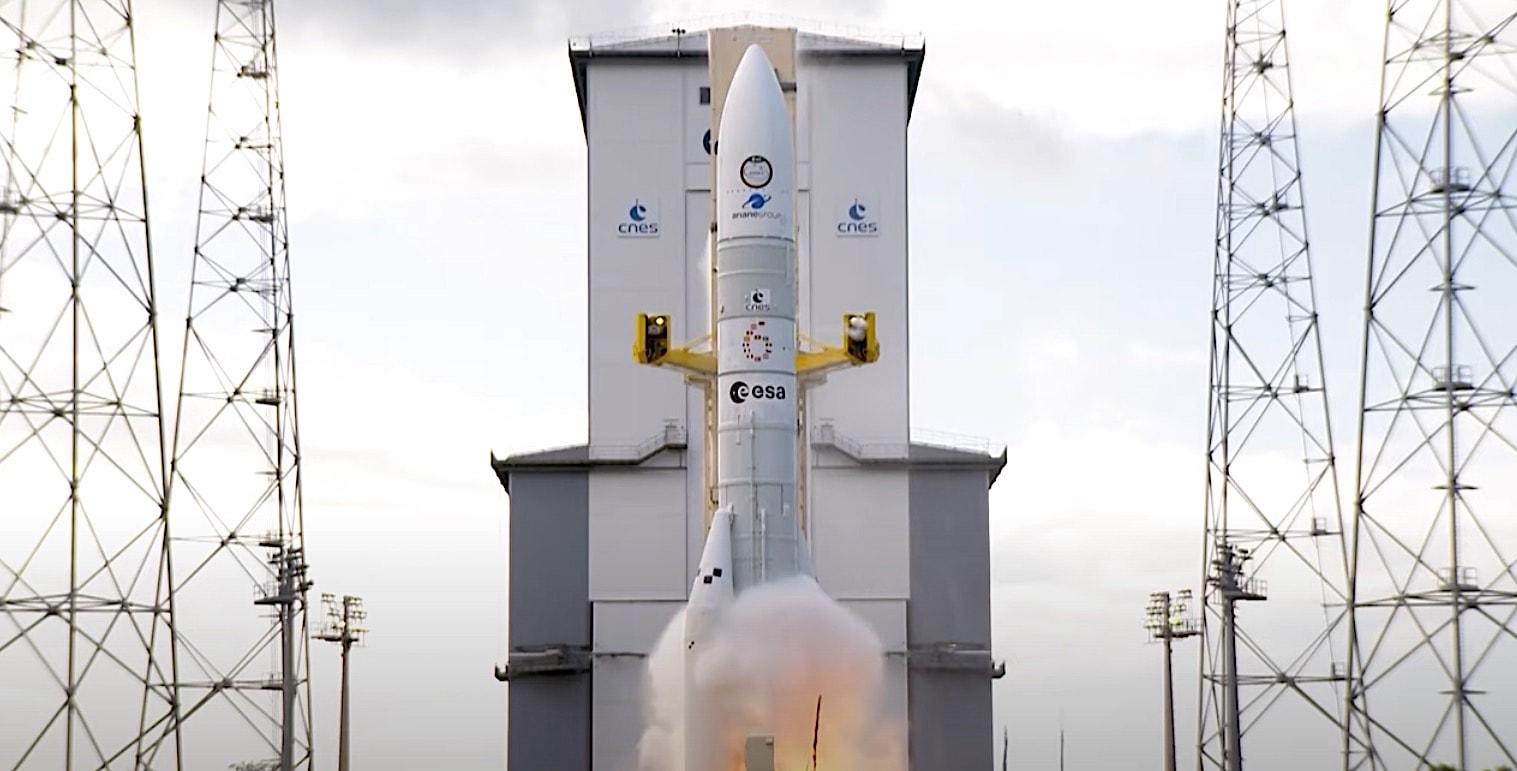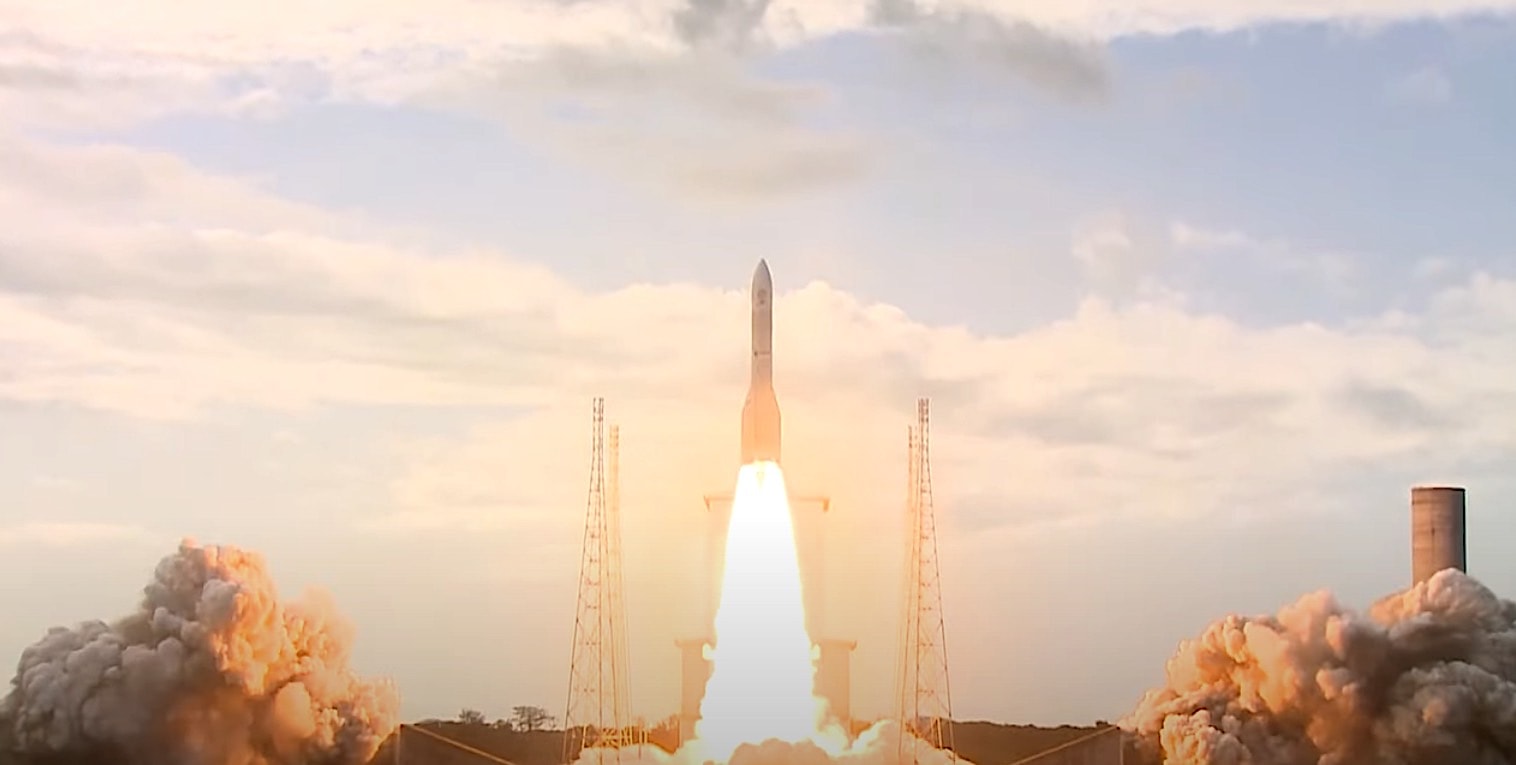The global space race has reignited, with the US seemingly at the forefront. From eye-catching rocket designs to audacious missions beyond the planet, America’s vast investments propel us outward.
But across the Atlantic, Europe’s space agency, ESA, is quietly making its mark. A longstanding partner of NASA, Europe plays a vital role on the International Space Station and holds a seat at the table for future lunar and Martian missions.
Yet, ESA also charts its course, fostering a robust spacefaring agenda that includes the development of its launch vehicles. The recent successful maiden flight of the Ariane 6 rocket stands as a testament to European ingenuity, a powerful symbol of their independent space ambitions that rivals the best of their American counterparts.
This is ESA’s moment to step out of NASA’s shadow and solidify its position as a major player in the new era of space exploration. Fueling Europe’s ambitions for space exploration, the Ariane rocket family has served as a workhorse for lofting payloads into orbit since the late 1970s.

Inspired by Greek mythology’s Ariadne, the first iteration, Ariane 1, paved the way for a lineage of increasingly sophisticated launch vehicles. Recognizing the rapidly changing commercial spaceflight world, European leaders in 2014 set their sights on developing the next generation Ariane 6.
This ambitious project demanded a collaborative effort, with ArianeGroup leading the construction and drawing upon the expertise of hundreds of companies spread across 13 European nations.
To ensure seamless integration and system design, the European Space Agency (ESA) plays a critical role in procurement and architectural oversight. A cornerstone of European space exploration, the Ariane 6 rocket embodies the collaborative spirit that has driven humanity’s push beyond the planet.
Towering nearly 200 feet tall, it surpasses its predecessor, the Ariane 5, in stature. But its capabilities extend far beyond mere size. This three-stage marvel boasts a staggering maximum launch weight of 900 tons, transforming it into a powerful workhorse capable of delivering a vast array of spacecraft to their designated orbital homes.
This versatility equips Ariane 6 to tackle a multitude of critical missions, from deploying behemoth telecommunication satellites that underpin global connectivity to carrying delicate scientific probes on groundbreaking voyages of discovery.
The first stage acts as the launchpad for this cosmic journey, utilizing solid rocket boosters – two or four depending on the mission profile to generate a colossal initial thrust. As the rocket ascends, the core stage takes over, powered by a cutting-edge Vulcain 2.1 engine, a descendant of the dependable powerplant that propelled the Ariane 5.
Finally, the upper stage, fueled by cryogenic liquids and equipped with a versatile Vinci engine that can reignite multiple times, meticulously maneuvers payloads into their precise orbital positions.
To ensure compatibility with a variety of cargo dimensions, Ariane 6 boasts two fairing options: a more compact, 46-foot version and a more spacious, 66-foot variant. Both are constructed from lightweight yet robust carbon fiber-polymer composite, safeguarding the precious cargo within during its ascent into the cosmos.
Beyond its impressive technical specifications, the Ariane 6 represents a significant leap forward in European spacefaring capabilities. Its modular design allows for cost-effective operation, while its enhanced launch capacity opens doors to a wider range of missions.
This European champion promises to be a key player in space exploration for years to come, fostering scientific discovery, technological advancements, and understanding of the universe. This versatile rocket boasts two configurations to tackle diverse mission needs.
The Ariane 62, equipped with two solid boosters, serves as a workhorse for government and scientific missions. It can deliver a hefty 4.5 tons of cargo to geostationary orbit, the prime location for communication satellites, or 10.3 tons to low Earth orbit, ideal for deploying constellations and scientific payloads.
For heavier payloads, the Ariane 64 steps up to the challenge. Packing four boosters, this powerhouse can launch 11.5 tons to geostationary orbit or a staggering 21.6 tons to low Earth orbit, making it suitable for hefty satellites and ambitious space missions.
This European marvel completed its first flight on July 9th, christened VA262. This wasn’t just a test run; the Ariane 6 carried a medley of scientific experiments, satellites, payload deployment mechanisms, and reentry demonstration technologies developed by European researchers and organizations.
The successful launch signifies a crucial stepping stone. The future holds the promise of the Ariane Next, a two-stage behemoth slated for the next decade. This next-generation launch vehicle promises to be a game-changer, empowering the European Space Agency (ESA) to undertake even more groundbreaking space exploration endeavors.

